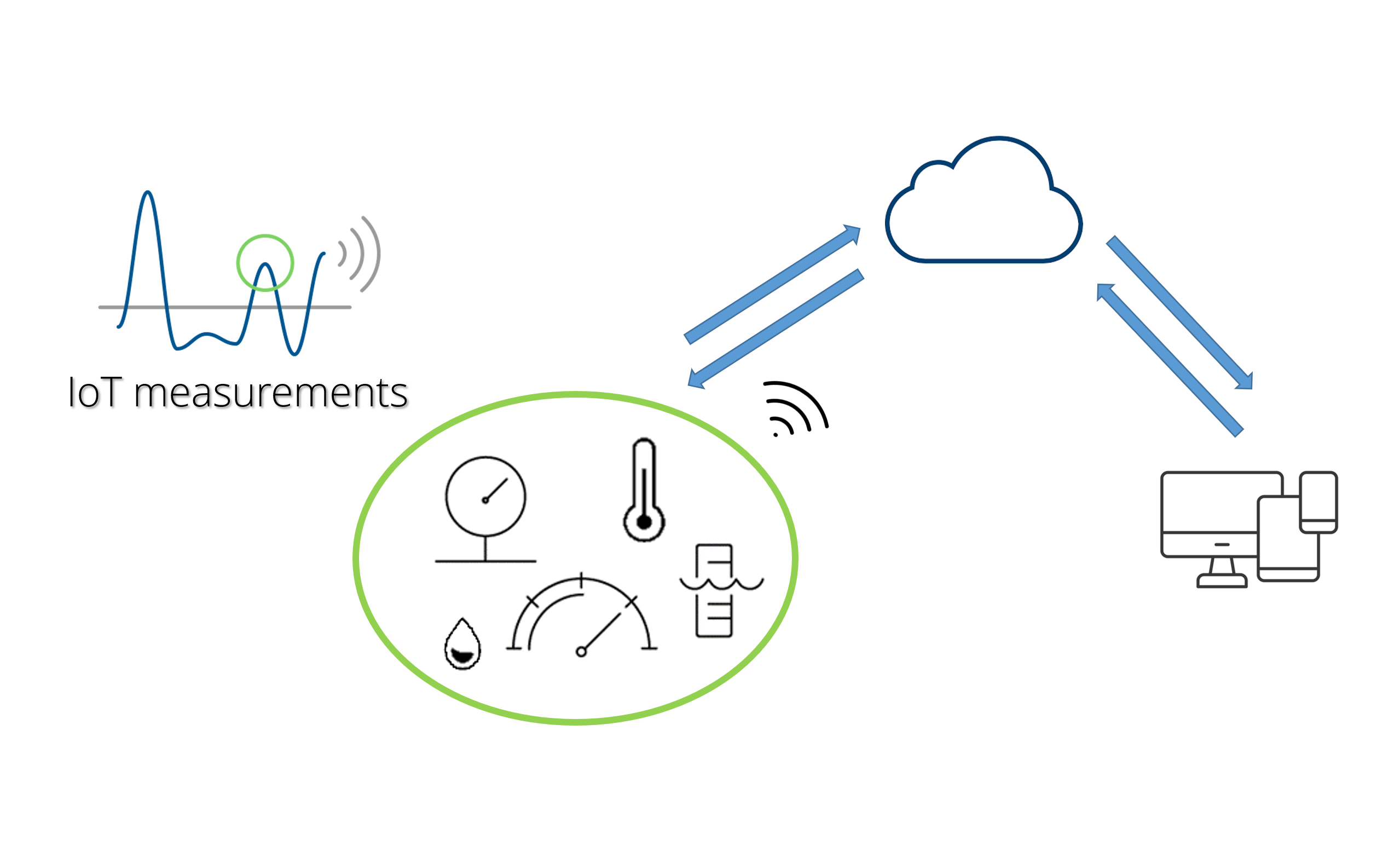
Do you have ideas for new IoT products or how to improve your products with new sensors as part of your company’s digitalization? Then make sure to consider the process steps described below.
IoT measurements
IoT solutions consists of different parts. There’s the measurement node, the communication to the cloud, the cloud solution and the visualisation on different devices. In this blog post I will focus on the measurement node, and this is what we like to call IoT Measurements.
On the measurement node there can be sensors that measure, but there can also be actuators that act and control. Both types can be evaluated in the same manner, since a lot of parameters are the same whether it’s a signal to measure or a signal to be set.
The IoT measurement process

Define sensor requirements
First step is to get the requirements on the sensors and actuators into the requirement specification. These requirements often comes from breaking down the requirements of the final product into technical parts. Make sure all requirements are SMART – Specific, Measurable, Achievable, Relevant and Time-bound.
Market research and conceptual proposals
Once the requirements are in place a market research is the next step. Which are the available sensors? Are there different ways of measuring the same thing? It’s a good thing to compare different solutions and different specific sensors, listing pros and cons of the different concepts. A sensor which is better in one aspect can often be worse in another. Both measurement-related aspects as well as other sensor aspects should be summarized in order to be able to make the best decisions.
Prototype for measurement evaluation
One or more solutions are selected for evaluation in a prototype. The focus for this first prototype is to gather measurement data for evaluation. The prototype hardware and software doesn’t have to be an embedded system at this point. Since the data evaluation algorithm might not yet be known there’s no need to do optimized code and hardware for power consumption at this stage. This can be done later.
Test, update prototype and test again
When the prototype is ready it can be evaluated in a real or simulated environment depending on the application. The output is typically a test report weighing performance to requirements. Normally the next step is to do modifications to the prototype or in some cases even update the requirement specification depending on the results. This is an iterative process.
Continued journey towards the final product
Once satisfied with the testing and the results, the journey toward the real product can continue. Perhaps the next step is to do another prototype containing also the other parts of the sensor node: the communication and the power generation. This is also the time to optimize and embed the code and the algorithms.
If you are more interested in selecting sensors for you IoT application, there will soon be another blog post about which parameters that are important. Stay tuned for that!
By Karin Hellqvist

Karin Hellqvist
CSO
